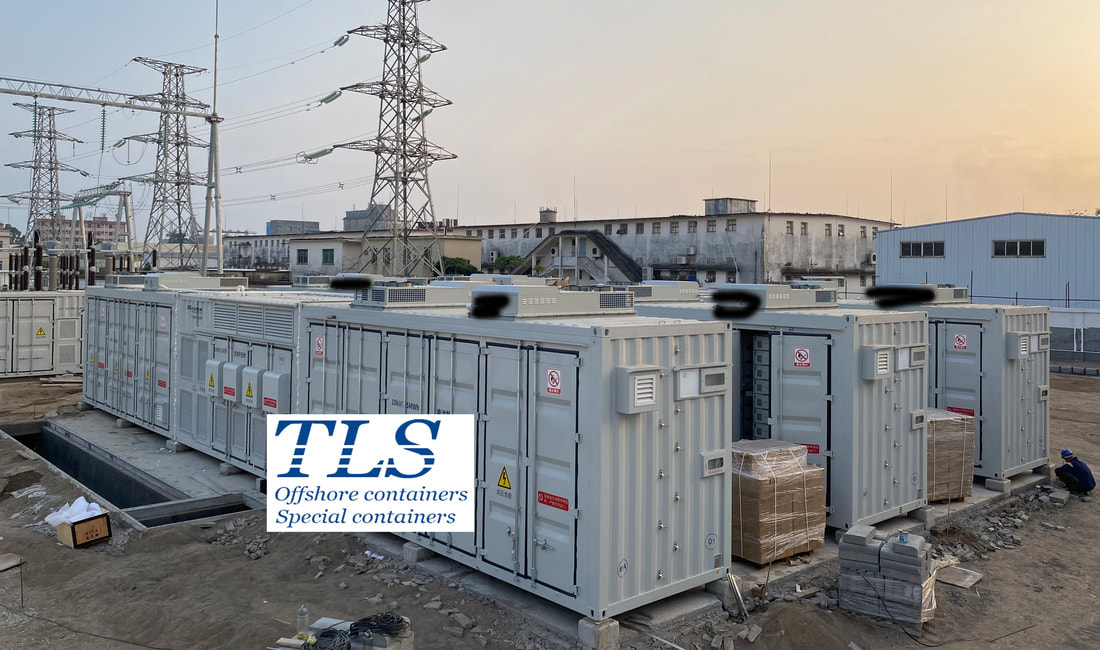|
Designing a Battery Energy Storage System (BESS) container in a professional way requires attention to detail, thorough planning, and adherence to industry best practices. Here's a step-by-step guide to help you design a BESS container: 1. Define the project requirements: Start by outlining the project's scope, budget, and timeline. Determine the specific energy storage capacity, power rating, and application (e.g., grid support, peak shaving, renewable integration, etc.) of the BESS. 2. Select the battery technology: Choose the appropriate battery technology based on the project requirements, such as lithium-ion, flow batteries, or advanced lead-acid. Consider factors like energy density, cycle life, safety, and cost when making your selection. 3. Size the BESS: Estimate the required energy capacity and power rating based on the application, and perform load analysis and simulations to ensure the BESS will meet the desired performance metrics. 4. Design the container layout: Design the container layout to accommodate the battery modules, inverters, transformers, HVAC systems, fire suppression systems, and other necessary equipment. Plan the layout to optimize space utilization, thermal management, and safety. 5. Plan for safety and security: Incorporate safety measures, such as fire suppression systems, gas and smoke detectors, and emergency ventilation. Also, ensure proper access control and surveillance systems to protect the BESS from unauthorized access or vandalism. 6. Implement thermal management: Design an effective HVAC system to maintain optimal operating temperatures for the batteries and other components. The thermal management system should be energy-efficient and capable of maintaining temperature uniformity within the container. 7. Electrical design: Design the electrical system to include battery management systems (BMS), inverters, transformers, switchgear, and protection devices. Ensure proper grounding, short circuit protection, and fault detection. 8. Plan for monitoring and control: Incorporate a supervisory control and data acquisition (SCADA) system to monitor and control the BESS remotely. The SCADA system should collect real-time data and provide alerts and notifications for any anomalies or maintenance needs. 9. Design for transportability and modularity: Ensure the container is designed for easy transportation and deployment. Consider using standard ISO container sizes and modular components that can be easily expanded or replaced as needed. 10. Perform simulations and testing: Simulate the BESS performance under various operating conditions and scenarios to validate the design. Conduct thorough testing of the complete system, including factory acceptance tests (FAT) and site acceptance tests (SAT), to ensure proper operation and compliance with industry standards. 11. Documentation and training: Prepare detailed documentation of the design, including technical specifications, installation guides, operation manuals, and maintenance procedures. Provide training for the operation and maintenance staff to ensure they are familiar with the system and its components. By following these steps, you can design a professional and efficient BESS container that meets industry standards and delivers reliable performance. Among the above considerations, Modularity is a key aspect of designing a BESS container as it allows for scalability, flexibility, and ease of maintenance. In the context of a BESS container, modularity refers to designing the system using standardized, interchangeable components that can be easily combined, expanded, or replaced as needed. Here are some considerations for implementing modularity in a BESS container design: 1. Standardized container sizes:Utilize standardized ISO container sizes for the BESS enclosure to simplify transportation, logistics, and installation. Common sizes include 20-foot, 40-foot, and 45-foot containers, which are widely available and easily transportable by trucks, trains, or ships. 2. Modular battery racks and units:Design the battery racks and units to be modular so they can be easily added, removed, or replaced without affecting the overall system. This allows for easy expansion of the energy storage capacity or replacement of faulty or aged batteries. Ensure compatibility between battery modules, and design them to be easily connected and disconnected. 3. Scalable power conversion systems: Choose power conversion systems (e.g., inverters, transformers) that are modular and can be easily scaled to match the system's power requirements. This enables you to add or remove power conversion components as needed, depending on the system's growth or changes in application. 4. Modular auxiliary systems: Design auxiliary systems, such as HVAC, fire suppression, and monitoring systems, to be modular as well. This allows for easy replacement or expansion of these components without disrupting the overall system. 5. Interconnectivity and standardization: Ensure that all components within the BESS container use standardized connectors and communication protocols to enable seamless interconnectivity between modules. This simplifies integration, expansion, and maintenance. 6. Pre-engineered and pre-assembled components: Utilize pre-engineered and pre-assembled components to simplify and expedite installation and commissioning. Pre-assembled components can be easily integrated into the container, reducing on-site assembly time and labor costs. 7. Flexibility in layout and design: Design the container layout with flexibility in mind, enabling easy reconfiguration or expansion of the system. This can be achieved by implementing a modular racking system, which can be easily reorganized or extended as needed. By incorporating modularity into the design of a BESS container, you can create a system that is easily scalable, adaptable, and maintainable. This will help you meet changing demands, extend the service life of the system, and minimize downtime due to maintenance or component replacement. Comments are closed.
|
Archives
July 2024
Categories
All
|
- Home
-
Containerised solutions
- Intelligent pressurised container | MUD logging cabin
- Battery energy storage system (BESS) container
- Flexible grid tied battery storage system
- Laboratory container | workshop container | Equipment containers
- Temporary refuge shelter | Toxic gas refuge | Safe haven
- Offshore accommodation cabin | office container
- Reefer container | Refrigerated container
- Intelligent waste water treatment container
- Fresh water generator container
- Cargo Containers
- Product photos & videos
- News & Blogs
- Contact us
|
Featured products
Intelligent pressurised container Temporary refuge (TR) shelter, toxic gas refuge (TGR) Battery energy storage system (BESS) container Containerised waste water treatment plant Fresh water generator container Reefer container Laboratory container, Workshop container Accommodation container Offshore closed container |
All Rights Reserved 2020 © TLS Offshore Containers / TLS Energy
|

